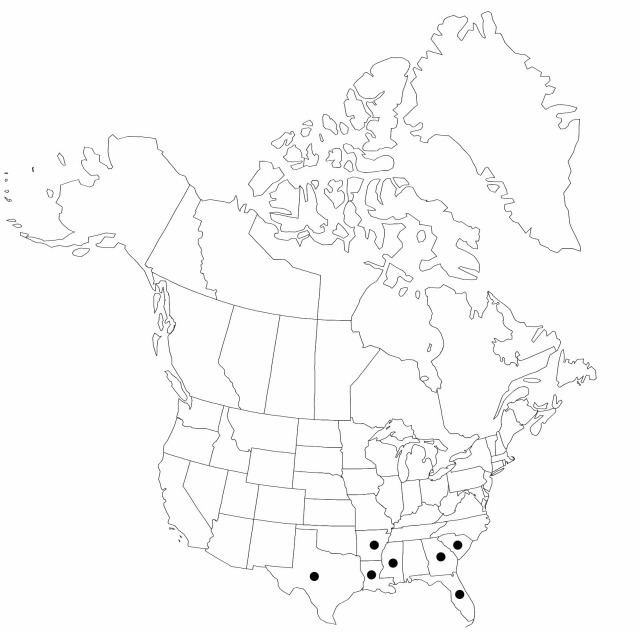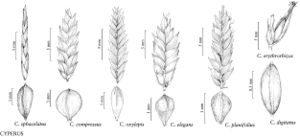Difference between revisions of "Cyperus oxylepis"
Syn. Pl. Glumac. 2: 25. 1855.
FNA>Volume Importer |
FNA>Volume Importer |
||
| Line 48: | Line 48: | ||
|publication year=1855 | |publication year=1855 | ||
|special status= | |special status= | ||
| − | |source xml=https://jpend@bitbucket.org/aafc-mbb/fna-data-curation.git/src/ | + | |source xml=https://jpend@bitbucket.org/aafc-mbb/fna-data-curation.git/src/f6b125a955440c0872999024f038d74684f65921/coarse_grained_fna_xml/V23/V23_282.xml |
|genus=Cyperus | |genus=Cyperus | ||
|subgenus=Cyperus subg. Cyperus | |subgenus=Cyperus subg. Cyperus | ||
Revision as of 20:07, 24 September 2019
Herbs, perennial, cespitose, coarse, (culms, leaves, bracts, and rays viscid). Culms roundly trigonous, 10–50 cm × 0.9–2.4 mm. Leaves: adaxial face concave, becoming flat to trigonous apically, 10–46 cm × 1.5–4 mm, margins involute. Inflorescences: spikes ovoid, 1–5.5 cm wide; rays usually 3–6, 0.5–5 cm, glabrous; sometimes absent in small plants; if absent, inflorescence a congested head of spikelets 1–3.5 cm diam.; 2d order rays 0–3, 1–3 cm; bracts 3–5, vertical to ascending at 45°, 2.5–25 cm × 1.2–4 mm, margins involute; 2d order bracts 0–2, 5–20 mm; rachilla persistent, wingless. Spikelets 5–24, greenish yellow to golden brown, oblong to linear-lanceoloid, quadrangular, strongly compressed, 7–20(–30) × 2.5–4(–6) mm; floral scales 10–20(–40), spreading, pale green to stramineous, laterally 2–3-ribbed, ovate-lanceolate, 3.1–4 × 1.5–2.4 mm, apex with mucro 0.2–0.8 mm. Flowers: anthers 0.6–0.8 mm; styles 0.8–1.6 mm; stigmas 1–1.4 mm. Achenes light to dark brown, rarely somewhat reddish, stipitate, ellipsoid, 2–2.4 × 0.5–0.8 mm, base cuneate, stipe whitish, spongy, 0.2–0.3 × 0.2–0.4 mm, apex acute, persistent style forming beak 0.5–1.2 mm, surfaces glabrous or finely papillose.
Phenology: Fruiting summer.
Habitat: Ditches and disturbed places in marshes, often in saline soil
Elevation: 0–100 m
Distribution

Ark., Fla., Ga., La., Miss., S.C., Tex., Mexico, South America.
Discussion
Cyperus oxylepis is easily recognized by its sticky leaves, culms, and bracts (in living plants), involute leaves,and golden brown spikelets. The ovate-lanceolate floral scales and the ellipsoid, brownish achene with a persistent beak distinguish C. oxylepis from other species with deciduous floral scales.
Selected References
None.
